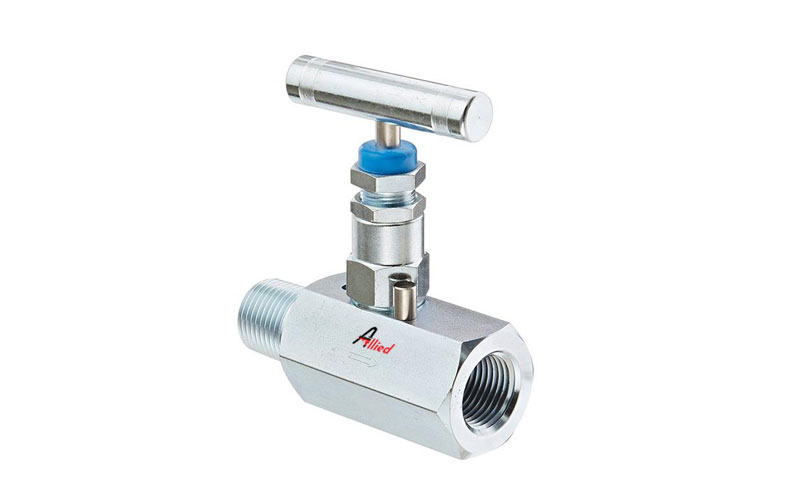Lubrication of Stainless Steel Machines and Components

Stainless steel is used to make pipes, valves, and a host of other components, equipment, and machines. The physical and chemical properties of this material make it a versatile material used in many residential and industrial applications. It is an alloy composed of iron, chromium, and nickel. Machines and equipment made using stainless steel are highly durable and corrosion-resistant. Just like components made of other alloys, stainless steel components also require regular maintenance. Lubrication is an important part of regular maintenance.
Proper lubrication of stainless steel machines and components is essential for ensuring their smooth operation and longevity. The key to effective lubrication lies in selecting the right lubricants and applying them correctly. This article explores the significance of lubrication for stainless steel components, focusing on high pressure ball valves and high pressure water valves.
Importance of Lubrication
Lubrication reduces friction between moving parts, which is crucial for preventing wear and tear. In stainless steel machinery, this is particularly important as it helps maintain the integrity of the components, preventing premature failure and extending their operational life. Proper lubrication also helps in:
Reducing Heat Generation
Friction between moving parts can generate heat, which may lead to thermal expansion and reduced efficiency. Lubricants create a protective film that minimizes friction and helps in dissipating heat, maintaining optimal operating temperatures.
Preventing Corrosion
While stainless steel is known for its corrosion resistance, it is not entirely immune to it. Lubricants often contain additives that provide an additional layer of protection against moisture and other corrosive elements, thereby preventing rust and degradation.
Enhancing Performance
Smooth operation of machines and valves is critical for performance. Regular lubrication ensures that components such as high pressure ball valves operate smoothly, allowing for accurate control and efficient handling of fluids under high pressure.
Reducing Wear and Tear
By minimizing friction and abrasion, lubrication helps in reducing the wear and tear on moving parts. This is particularly important for high pressure water valves, which are subject to significant stresses and pressures during operation.
Types of Lubricants
Choosing the right lubricant is essential for effective maintenance. Different types of lubricants serve different purposes, and the choice depends on the specific requirements of the equipment. Common types include:
Grease
Grease is used for its ability to adhere to surfaces and provide long-lasting lubrication. For stainless steel components, a high-quality, non-reactive grease is recommended. It helps in maintaining a continuous layer of protection and reducing friction in high-pressure environments.
Oil
Lubricating oils are suitable for their ability to flow and reach tight spaces. Synthetic oils are often preferred for their resistance to high temperatures and harsh chemicals. They are ideal for high pressure ball valves that require consistent lubrication under varying operating conditions.
Dry Lubricants
These include substances like graphite or PTFE (polytetrafluoroethylene). Dry lubricants are beneficial in environments where wet lubricants could attract contaminants or where lubrication needs to be applied in very low quantities. They are useful for maintaining the function of high pressure water valves.
Lubrication Procedures
Proper lubrication involves several key steps to ensure the effectiveness of the process:
Clean the Components
Before applying lubricant, it is essential to clean the components thoroughly to remove any dirt, debris, or old lubricant. This ensures that the new lubricant can adhere properly and function effectively.
Apply the Lubricant
Follow the manufacturer’s recommendations for the type and amount of lubricant. Apply it evenly across all moving parts, including critical areas of high pressure ball valves and high pressure water valves.
Operate the Equipment
After lubrication, operate the equipment briefly to ensure the lubricant is evenly distributed and reaches all necessary areas. This step helps in maximizing the efficiency of the lubrication.
Inspect Regularly
Regular inspections are crucial to ensure that the lubrication remains effective. Look for signs of wear, leaks, or any changes in performance that might indicate the need for additional maintenance or re-lubrication.
Establish a Maintenance Schedule
Develop a regular maintenance schedule based on the operating conditions and manufacturer’s guidelines. Regular lubrication is key to preventing issues and maintaining the longevity of stainless steel components.
Benefits of Proper Lubrication
Proper lubrication of stainless steel machines and components, including high pressure ball valves and high pressure water valves, offers several benefits:
Extended Service Life
Regular lubrication reduces wear and tear, helping to extend the lifespan of the components.
Improved Efficiency
Well-lubricated components operate more smoothly, leading to better performance and reduced energy consumption.
Reduced Downtime
Effective lubrication minimizes the risk of unexpected failures, leading to lower maintenance costs and reduced downtime.
Enhanced Safety
Proper lubrication ensures that components function correctly, reducing the risk of accidents and maintaining safe operation.
Conclusion
Lubrication is a vital aspect of maintaining the performance and longevity of stainless steel machines and components. By reducing friction, preventing wear, protecting against corrosion, and ensuring smooth operation, regular lubrication helps to keep equipment such as high pressure ball valves and high pressure water valves functioning optimally. Selecting the appropriate lubricant and following proper lubrication procedures are essential for achieving the best results. Regular maintenance not only extends the service life of the components but also enhances overall system efficiency and safety.








